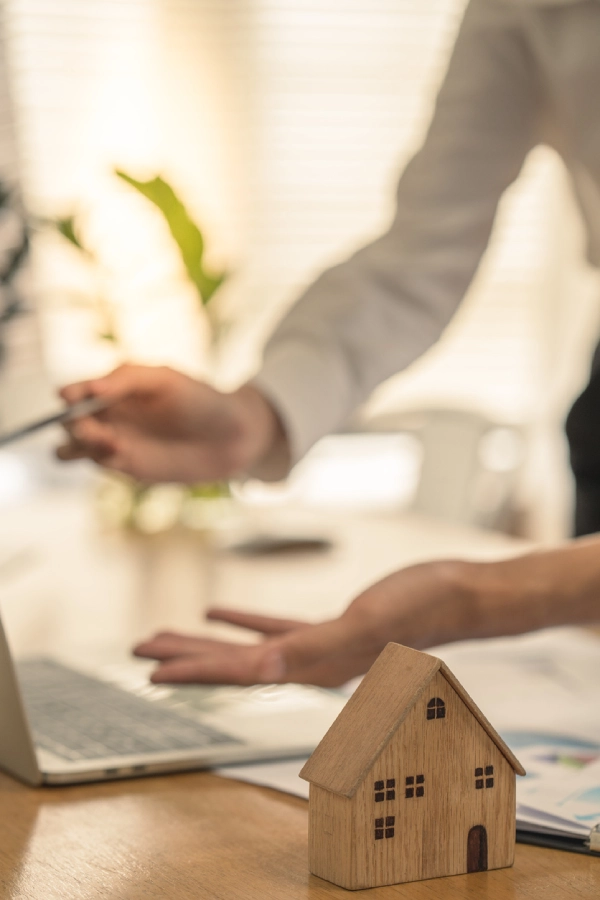Step 3: What Does It Really Cost to Buy a House?
Ready to see what it really costs to buy a house? First-time homebuyers often think only about the down payment. But the real cost goes far beyond that. In this guide, we break down every fee and expense so you know exactly what to expect.
We break everything down using clear language and real numbers so you know exactly what to expect. This guide will help you understand the total cost of buying a house and feel fully prepared to take the next step with confidence.

Purchase Price and Down Payment
The first big cost is the price of the home. That might be $200,000 or $500,000 or more depending on where you live. Most lenders ask for a down payment. You might pay as little as 0 percent with some programs or 20 percent to avoid mortgage insurance. So for a $300,000 home, you might need $9,000 or $60,000. That is a huge difference. And that is just the beginning.
Closing Costs
Closing costs are fees you pay when the sale closes. They usually range from 2 percent to 6 percent of the home price. This includes things like:
- Loan origination fees
- Appraisal fees
- Title insurance
- Prepaid taxes and insurance premiums
- Recording and transfer fees
For a $300,000 home, closing costs could range from $6,000 to $18,000. These vary based on your lender and location
Mortgage Insurance
If your down payment is less than 20 percent, you may have to pay mortgage insurance. This protects the lender in case you default. It can cost hundreds of dollars each month. Some loans also charge an upfront mortgage insurance premium, which is often added to your loan amount.

Property Taxes and Insurance
Property taxes depend on where you live and are often about 1 percent of the home’s value. On a $300,000 home, that is about $3,000 each year. Homeowners insurance is also required. It typically runs about $1,000 to $1,500 annually. These are recurring costs you must budget for every year.
Maintenance and Utilities
Owning a home means you are responsible for upkeep. Experts suggest saving 1 percent of your home’s value every year for repairs. That means $3,000 a year for a $300,000 home. Also, utility bills often increase after you buy, especially if your new home is larger than your rental.
Moving Costs and Immediate Expenses
Do not forget to factor in the cost of moving. This could include:
- Hiring movers or renting a truck
- Short-term storage
- Home inspections
- Utility connection fees
- HOA dues (if applicable)
These costs can add up to $1,000 to $2,000 or more depending on how far you move and what services you use.
Example Cost Breakdown
Here is a sample of what a first-time buyer might pay for a $300,000 home:
| Expense | Approximate Cost |
|---|---|
| Down Payment (10%) | $30,000 |
| Closing Costs (3%) | $9,000 |
| Mortgage Insurance | $1,200 annually |
| Property Taxes | $3,000 annually |
| Homeowner’s Insurance | $1,200 annually |
| Maintenance and Repairs | $3,000 annually |
| Moving & Inspections | $1,500 one-time |
This gives you a better picture of the total cost of buying a house and maintaining it over time.
The Real World: Hidden and Phantom Costs
Sometimes homeowners face unexpected costs. These can include:
- Rising property taxes
- Higher-than-expected utility bills
- Emergency repairs
- HOA fee increases
- Insurance rate hikes
These hidden costs can creep up over time. That is why it is smart to leave extra room in your budget.
Other Costs After You Move In
Once you have the keys, new expenses begin to show up—especially if you are moving from an apartment or smaller rental. These are some common costs that come with setting up and maintaining your new home:
➤ Furniture and Décor
You may need to furnish more rooms than you had before. That could mean buying beds, a sofa, a dining table, dressers, rugs, curtains, and art for the walls. Even small things like lamps or wall hooks add up.
➤ Appliances
Many first-time buyers are surprised to find that not all homes include a refrigerator, washer, dryer, or microwave. Replacing or upgrading these appliances can cost thousands of dollars right after you move in.
➤ Tools and Equipment
Owning a home means you need basic tools like:
- A hammer and screwdrivers
- A drill
- A lawnmower
- A ladder
- A hose
- Yard tools
If you do not have these already, plan on spending a few hundred dollars getting started.
➤ Lawn Care and Landscaping
Whether you mow the yard yourself or hire someone, lawn care is a recurring cost. Some neighborhoods also have landscaping rules you must follow. Shrubs, trees, flowers, mulch, and even sprinklers may be needed.
➤ Pool Maintenance
If your home has a pool, you will need pool chemicals, tools, and possibly a pool cleaning service. Pools are fun, but they are also a big responsibility and come with regular costs.
➤ Pest Control
Routine pest control treatments help protect your home from bugs and rodents. Some homeowners sign up for quarterly service contracts, while others call as needed.
➤ Cleaning and Supplies
You may find yourself needing more cleaning tools and supplies in a bigger space. Some buyers also hire professional cleaners once a month or quarterly.
➤ Storage
If you have too many belongings and not enough space, a storage unit may be needed—either short-term during your move or long-term.
➤ Safety and Security
Some homeowners invest in alarm systems, smart locks, or security cameras. If you choose a monitored alarm, you will pay a monthly subscription for that service.
These costs are part of everyday life as a homeowner. They might not all hit you at once, but they are real and should be part of your long-term budget.
Ways to Lower Your Costs
Here are some tips to reduce your upfront and long-term costs:
- Ask your lender or agent about seller credits or closing cost help
- Look into down payment assistance programs for first-time buyers
- Shop for affordable homeowners insurance
- Get multiple quotes on movers and inspectors
- Budget for furniture and appliances ahead of time

Now you know what goes into the total cost of buying a house. It is more than just the down payment. Closing costs, insurance, taxes, utilities, furniture, tools, and even lawn care are all part of becoming a homeowner. But do not worry. With the right plan, you can be prepared for it all.
The more you know upfront, the more confident and successful you will be. First-time homebuyers who plan for both upfront and long-term expenses are much more likely to enjoy their home and avoid financial stress.
Have Questions?
We are here to help. Reach out if you have any questions about what it really costs to buy a home. We are happy to walk through your numbers and options with you.